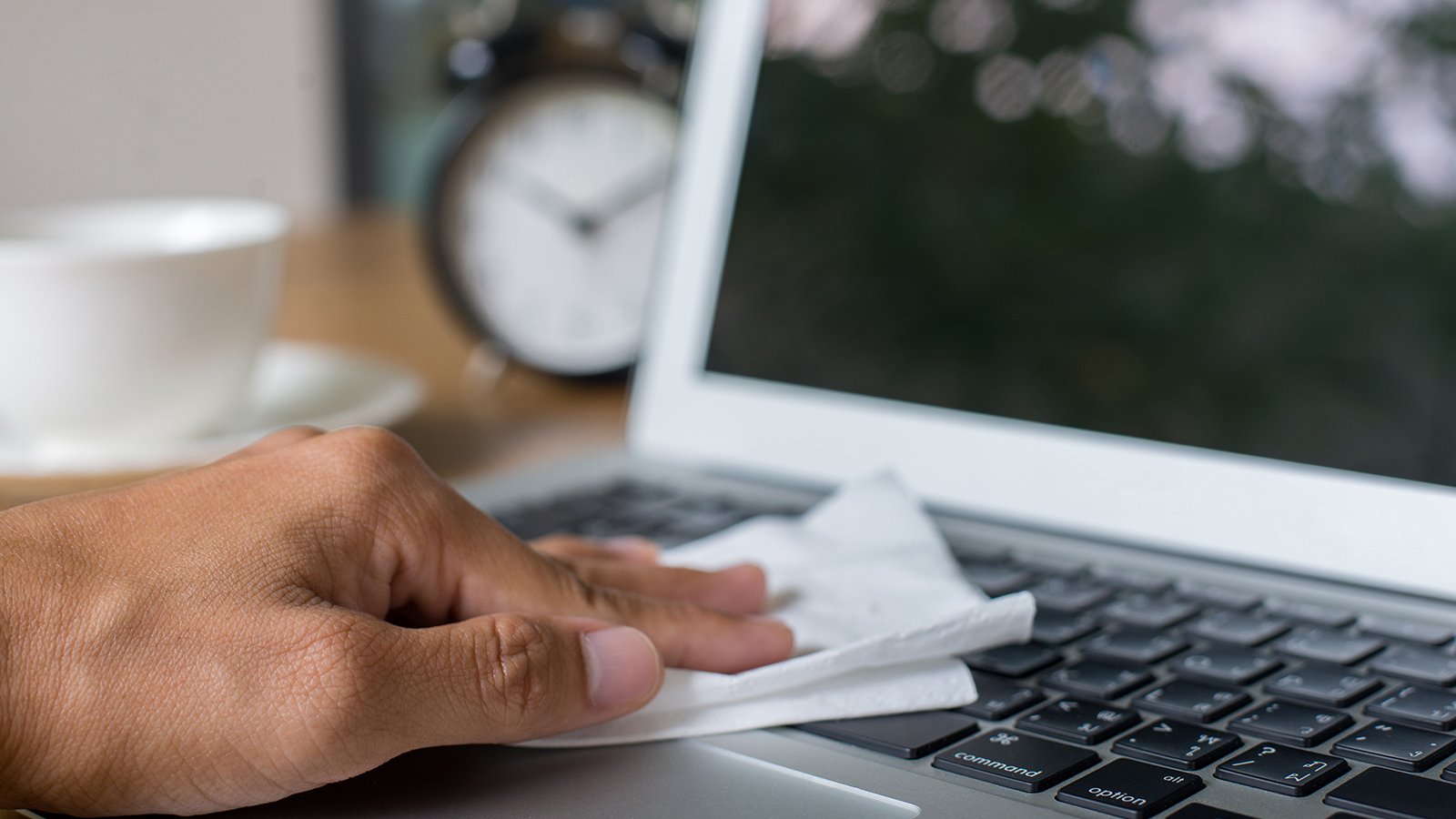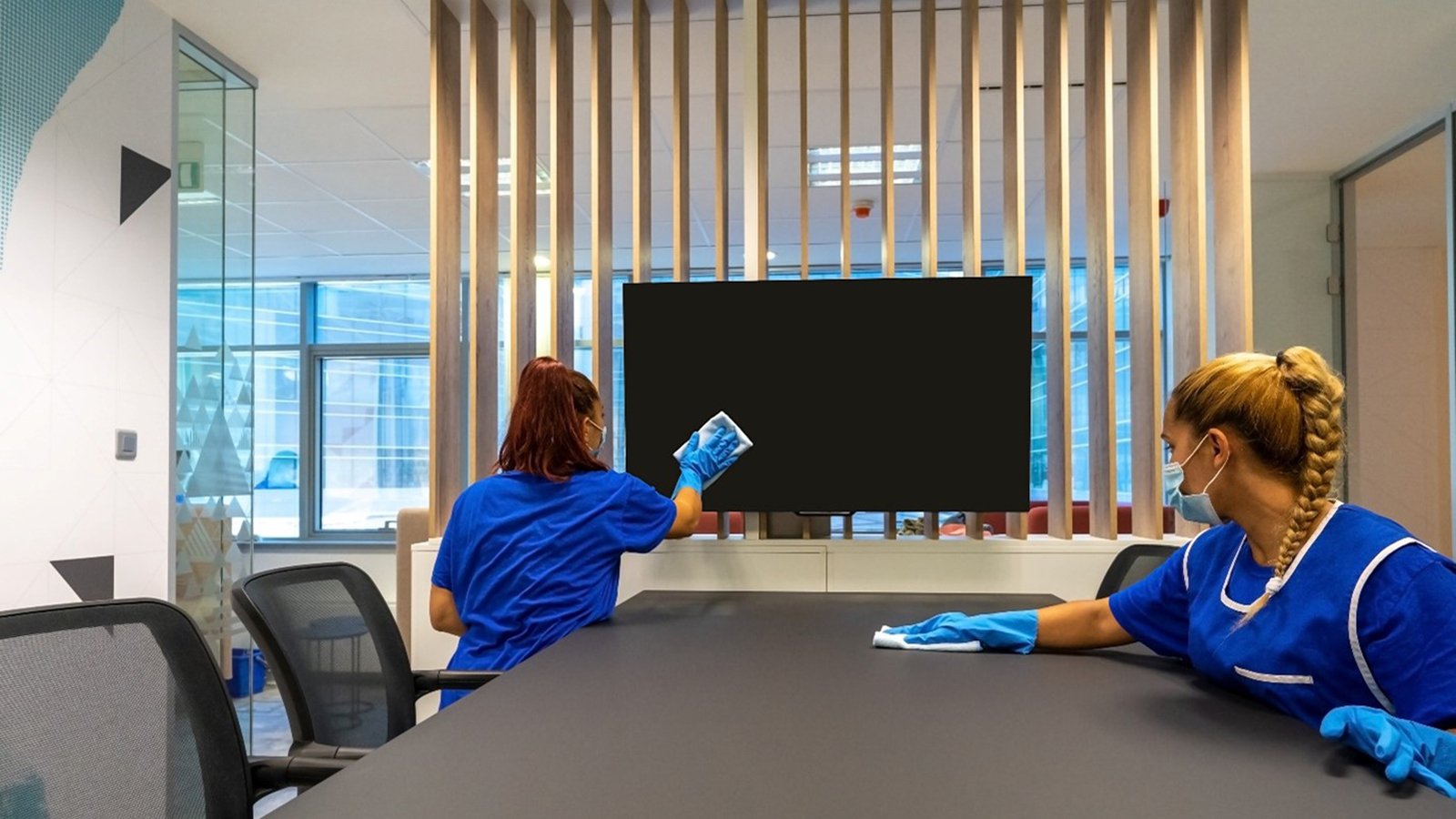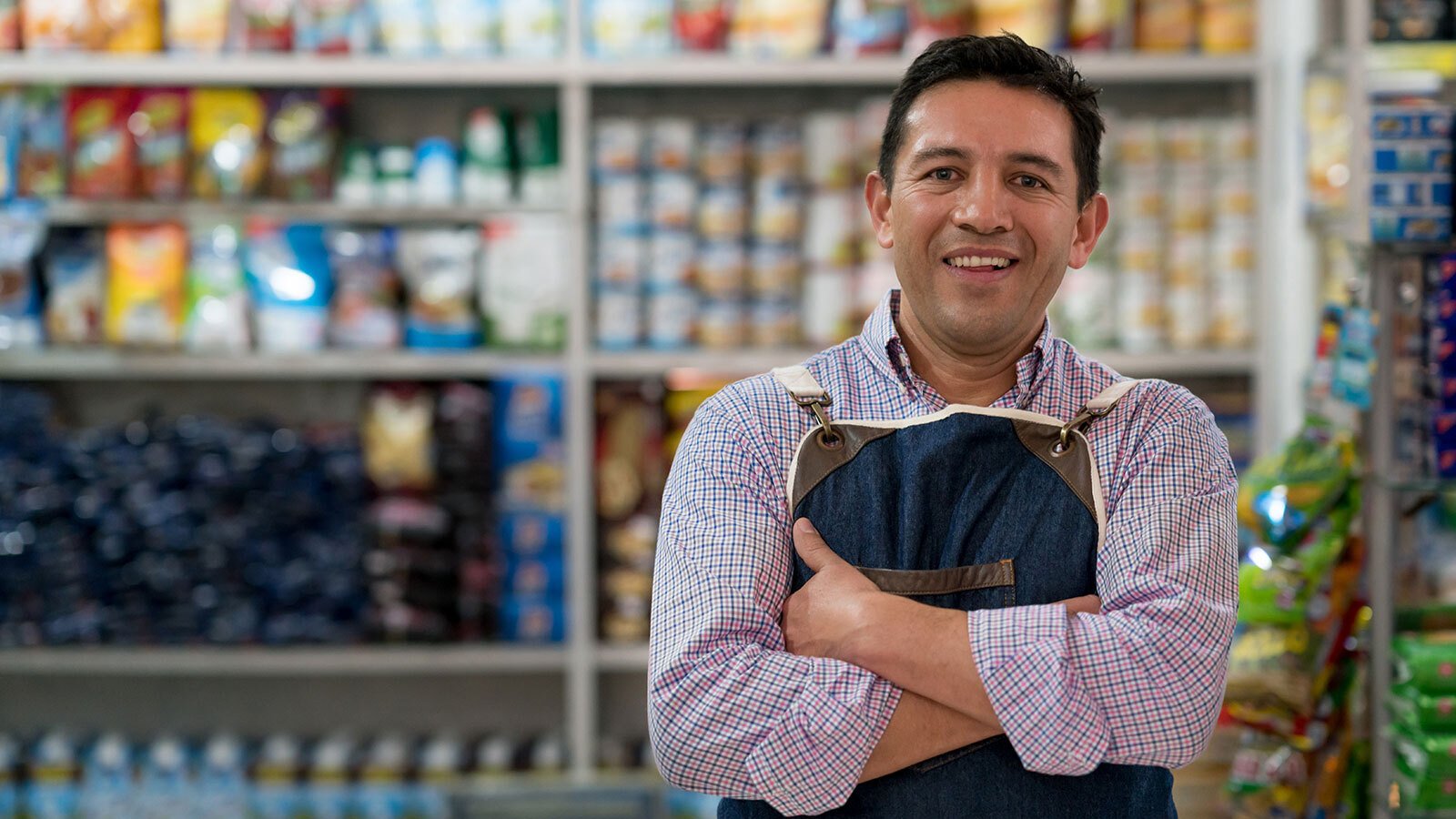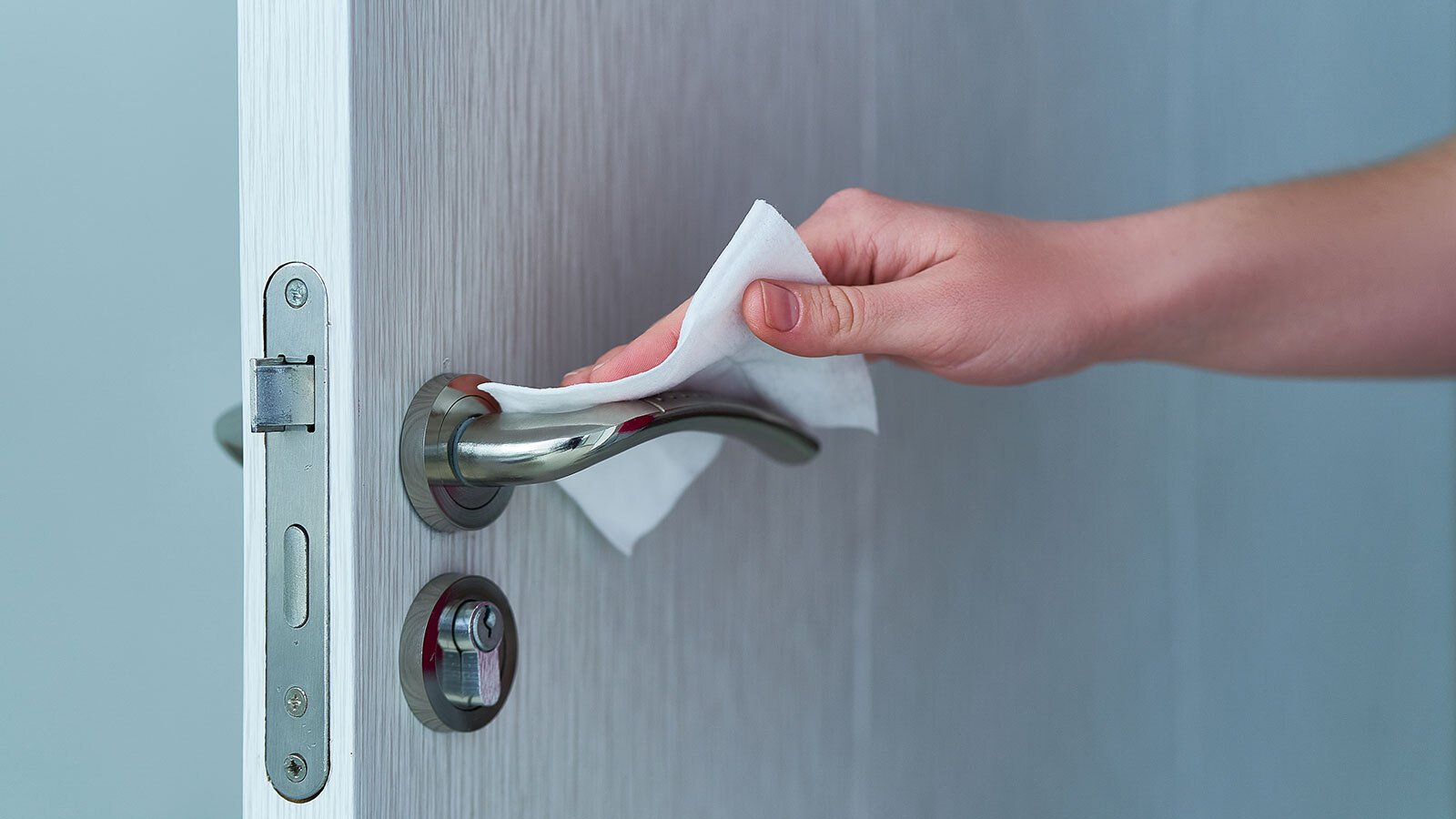Last Updated SEPTEMBER 2022
Got Cleaning Questions? We've Got Answers.
Maintaining clean surface areas at home and in your workplace are important for everyone’s hygiene and well-being. The following are answers to some of the most frequently asked questions about hand and surface cleaning guidelines.

1. Why is maintaining a clean surface important?
Cleaning of visibly dirty surfaces followed by disinfection is a best practice recommended by the WHO for hygiene in community settings.
2. What is the difference between cleaning, disinfecting and sanitizing* of general surfaces?
Cleaning removes germs, dirt, and impurities from surfaces or objects. Cleaning works by using soap (or detergent) and water to physically remove germs from surfaces. This process does not necessarily kill germs, but by removing them, it lowers their numbers and the risk of spreading infection.
Disinfecting kills germs on surfaces or objects. Disinfecting works by using chemicals to kill germs on surfaces or objects*. This process does not necessarily clean dirty surfaces or remove germs, but by killing germs on a surface after cleaning, it can further lower the risk of spreading infection.
Sanitizing lowers the number of germs on surfaces or objects to a safe level, as judged by public health standards or requirements. This process works by either cleaning or disinfecting surfaces or objects to lower the risk of spreading infection.
*Non-food contact surfaces
Read more about the differences here.
3. What are the recommendations for a good surface cleaning protocol?
Routinely clean and disinfect all frequently touched surfaces in the workplace, such as workstations, keyboards, telephones, handrails, and doorknobs.
• Step 1 – clean the surface with a detergent or soap and water.
• Step 2 – follow that by disinfecting the surface using appropriate disinfectants. It also recommended to provide disposable wipes so that commonly used surfaces (for example, doorknobs, keyboards, remote controls, desks) can be wiped down by employees before each use.
For more information on targeting hot spots in office building click here and in retail, grocery & foodservice areas click here .
4. What does the science say about how reusable cotton towels can bind and neutralize quaternary ammonium disinfectants?
Poorly disinfected surfaces may serve as germ house, increasing the risk of germ transfer to people. This study observed that some reusable cotton towels reduced the performance by up to 85% of 3 common surface quaternary ammonium (QAC) disinfectants. Conversely, synthetic microfiber towels did not alter the disinfectant performance. The conclusion of the study suggests that the use of cotton towels with QAC-based disinfectants should be reconsidered.
Disclaimer: Decreased Germicidal Activity of Commercially Available Disinfectants Containing Quaternary Ammonium Compounds when Exposed to Cotton Towels. American Journal of Infection Control. 41 (10), 908-911. Sifuentes LY, CP Gerba, I Weart, K Engelbrecht, and DW Koenig. 2013.
5. How can paper towels help remove up to 77% of bacteria on hands after washing1?
Studies suggest that paper towels can dry hands efficiently, remove bacteria effectively and cause less contamination of the washroom environment, according to a review article in Mayo Clinic Proceedings2.
Additionally, the rubbing process of paper towels physically removes bacteria along with the moisture.
Download this infographic for more information about paper towels and how hygiene expectations are changing.
References:
1University of Westminster, “Changes in the number of different types of bacteria on the hands before and after drying using paper towel, continuous cloth roller towel, warm air dryer and jet air dryer” (2010)
2Huang, C., Ma, W., & Stack, S. (2012). The hygienic efficacy of different hand-drying methods: a review of the evidence. Mayo Clinic proceedings, 87(8), 791–798. https://doi.org/10.1016/j.mayocp.2012.02.019
6. What are the proper steps to sanitize hands?
Dispense one dose of hand sanitizer into cupped hand, covering all surfaces. Rub hands to palm. Right palm over left dorsum with interlaced fingers and vice versa. Palm to palm with fingers interlaced.
Backs of fingers to opposing palm with fingers interlocked. Rotational rubbing of left thumb clasped in right palm and vice versa. Rotational rubbing, backwards and forwards with clasped fingers of right hand in left palm and vice versa. Once dry, your hands are sanitized.
For more information view how-to guide from World Health Organization.
7. What are the steps for proper hand washing?
Wet hands with water. Apply enough soap to cover all hand surfaces. Rub hands palm to palm. Right palm over left dorsum with interlaced fingers and vice versa. Palm to palm with fingers interlaced. Backs of fingers to opposing palms with fingers interlocked.
Rotational rubbing of left thumb clasped in right palm and vice versa. Rotational rubbing, backwards and forwards with clasped fingers of right hand in left palm and vice versa. Rinse hands with water. Dry thoroughly with a single-use towel. Use towel to turn off faucet. Your hands are now clean.
Download this infographic for tips on proper handwashing.
8. Why should I use soap and water to wash my hands?
Germs can get onto your hands and items you touch throughout the day. When your hands may be dirty, its best to wash them with soap and water to remove whatever germs and chemicals may be on them.
For more information view benefits of hand washing from CDC.
9. What if I do not have soap or water to wash my hands?
Washing hands with soap and water is the best way to get rid of germs in most situations. If soap and water are not available, use an alcohol-based hand sanitizer that contains at least 60% alcohol.
Learn when and how to wash your hands.
Information contained here are recommended best practices, and do not supersede any recommendations or regulations mandated by local laws and regulations.












